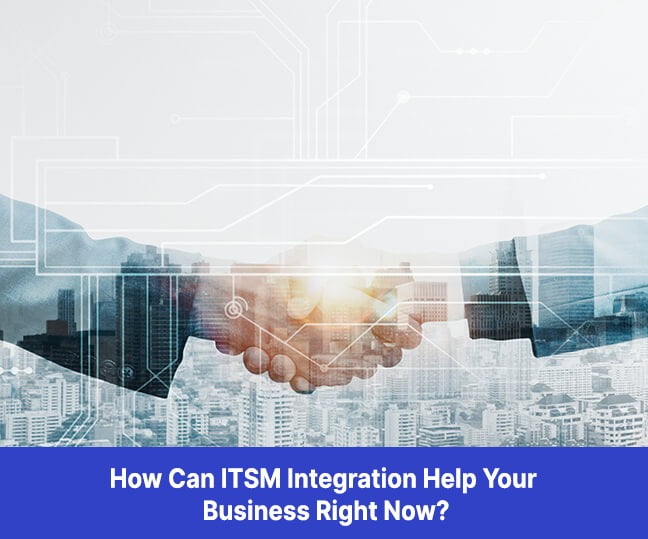In the IT landscape, effective management of IT services has become a cornerstone of organizational success. Enter IT Service Management (ITSM), a strategic approach that aligns IT services with business needs, fostering seamless operations, enhanced efficiency, and improved customer satisfaction. In this blog, we deep into the intricacies of ITSM implementation, exploring its definition, benefits, best practices, the role of automation, and the challenges that come along the way.
Related blog: Everything you should know about ITSM Automation
What is ITSM?
ITSM refers to a set of policies, processes, and practices aimed at designing, delivering, managing, and improving the way IT is used within an organization. At its core, ITSM focuses on aligning IT services with the needs of the business, ensuring optimal service delivery and continuous improvement. It encompasses a wide range of activities, from incident and problem management to change and configuration management, all with the goal of enhancing IT operations and customer satisfaction.
ITSM Tips and Benefits
Enhanced Efficiency
ITSM lays the foundation for operational fluidity. By establishing standardized workflows and harmonizing processes, organizations witness a surge in efficiency. The intricate dance of tasks becomes more choreographed, resulting in seamless operations that minimize bottlenecks and optimize resource allocation. This translates to heightened efficiency as operations unfold with precision and agility. As a result, downtime dwindles, and productivity ascends to new heights.
Improved Customer Satisfaction

The true essence of ITSM lies in its capacity to harmonize IT services with the ever-evolving needs of the business. This harmonization unfailingly resonates with customers, leading to an unparalleled level of satisfaction. IT services that are thoughtfully aligned with business goals ensure that customers’ demands are met in a timely and effective manner. In the realm of customer service, ITSM emerges as the conductor of a symphony where harmony between technology and business aspirations generates a crescendo of satisfaction and loyalty.
Better Decision-Making
In the information age, data is king. ITSM empowers organizations with an array of data-driven insights and performance metrics. These invaluable resources serve as beacons that guide informed decision-making, forming the bedrock of strategic planning and resource allocation. Organizations can anticipate trends, analyze patterns, and fine-tune operations with the precision that transforms decision-making from an art to a science. The data-backed decisions that ITSM facilitates illuminate a clear path forward, fostering a climate of innovation and adaptability.
Reduced Costs
Efficiency begets cost reduction – a fundamental principle that ITSM wholeheartedly embraces. Through streamlined processes, proactive resolution of issues, and resource optimization, ITSM becomes an embodiment of financial prudence.
The ripple effect is evident in the balance sheets, as organizations witness a reduction in operational costs. The finely tuned orchestration of tasks, coupled with proactive problem-solving, translates into a leaner financial footprint, allowing resources to be allocated to strategic initiatives that drive growth.
Increased Accountability
Clarity is the cornerstone of accountability, and ITSM champions this principle by assigning clear roles and responsibilities across the organizational spectrum. The delineation of tasks ensures that every facet of the operation has a designated steward, minimizing the likelihood of service disruptions. Accountability intertwines with reliability, creating an environment where each team member knows their role, takes ownership, and contributes to a harmonious orchestration that keeps the wheels of the organization turning seamlessly.
Best Practices of ITSM Implementation
Embarking on the journey of successful IT Service Management (ITSM) implementation requires a strategic approach and meticulous planning. Here are key best practices that pave the path to a seamless and effective ITSM transformation:
1. Custom strategy alignment: Tailor ITSM implementation to align with the unique needs and goals of your organization. A one-size-fits-all approach may not yield optimal results. Understand your organization’s specific challenges and aspirations, and design an ITSM strategy that addresses them directly.
2. Stakeholder engagement: Involve stakeholders from various departments and levels within the organization. Engage not only IT personnel but also business leaders, end-users, and cross-functional teams. Their insights and perspectives provide a comprehensive understanding of requirements, ensuring a well-rounded ITSM framework.
3. Process evaluation: Prior to implementation, conduct an in-depth evaluation of existing IT processes. Identify bottlenecks, redundancies, and areas for improvement. This assessment lays the groundwork for a streamlined and efficient ITSM framework.

4. User experience: Place user experience at the forefront of ITSM design. Ensure that end-users find the new processes intuitive, user-friendly, and conducive to their workflows. A seamless user experience enhances adoption and minimizes resistance to change.
5. Thorough training and education: Invest in comprehensive training programs to equip personnel with the skills and knowledge required to navigate the new ITSM landscape. Training should encompass not only the technical aspects but also the underlying principles and benefits of the ITSM framework.
6. Phased approach: Implement ITSM in phases rather than attempting a full-scale transformation all at once. This approach allows for iterative improvements, reduces disruption, and provides opportunities for course correction based on real-world feedback.
7. Key Performance Indicators (KPIs): Define clear and relevant KPIs to measure the success of ITSM implementation. These metrics should align with the organization’s strategic objectives and provide quantifiable insights into the impact of ITSM on operations, customer satisfaction, and cost savings.
8. Change management and communication: Establish a robust change management strategy to manage resistance to change and foster a culture of acceptance. Transparent and effective communication channels keep stakeholders informed about the progress, benefits, and goals of ITSM implementation.
9. Flexibility for continuous improvement: Design the ITSM framework with flexibility to accommodate future changes and evolving needs. Continuous improvement should be ingrained in the organizational culture, encouraging regular reviews and refinements of ITSM processes.
10. Vendor partnership and support: If implementing an ITSM tool, choose a vendor that aligns with your organization’s requirements and goals. A strong partnership with the vendor ensures ongoing support, updates, and assistance as your ITSM framework evolves.
11. Documentation and knowledge management: Establish a comprehensive documentation and knowledge management system. This repository should capture processes, best practices, and solutions, facilitating consistent service delivery and informed decision-making.
Importance of Automation in ITSM
In modern business operations, where speed, precision, and scalability are paramount, the role of automation has emerged as a game-changer. As organizations navigate the complexities of a digital world characterized by rapid change and relentless demands, automation emerges as the catalyst that not only ensures survival but also propels success. By embracing automation within ITSM, organizations forge a path toward operational excellence.
More Efficiency and Speed

Automation within ITSM is the conduit through which operational processes attain unparalleled efficiency. Repetitive and time-consuming tasks that were once manual endeavors are now orchestrated seamlessly by automated workflows.
The result is an accelerated pace of operations, where incident management, problem resolution, and change implementation unfold with unrivaled speed. By liberating human resources from mundane tasks, automation allows skilled IT personnel to focus on high-value initiatives that demand critical thinking and strategic acumen.
Consistency and Reliability
Manual processes, while prone to human error, often exhibit variability in execution. Automation introduces a standardization that transcends individual capacities, ensuring a consistent application of processes across the board. In the context of ITSM, this consistency translates to reliable service delivery, where incidents are addressed and problems are resolved with a level of precision that minimizes disruptions. The reliability inherent to automation cultivates trust among stakeholders and customers, elevating the reputation of IT as a dependable facilitator of business operations.
24/7 Availability and Proactivity

The digital landscape never sleeps, and neither does automation. By operating round the clock, automated processes within ITSM offer continuous monitoring and response capabilities.
This proactive vigilance enables the identification and rectification of issues before they escalate, safeguarding operations from potentially debilitating downtimes. Automation extends a virtual safety net that detects anomalies, triggers alerts, and initiates corrective actions, all without the need for human intervention. This not only prevents service disruptions but also contributes to a culture of proactive problem-solving.
Scalability and Resource Optimization
As organizations expand their digital footprint, the demand for IT services can surge unexpectedly. Automation rises to the occasion, seamlessly accommodating increased workloads without necessitating a corresponding surge in human resources. The scalability inherent to automated ITSM processes ensures that services remain responsive and efficient, regardless of fluctuations in demand. This optimized resource utilization translates to cost savings and the ability to allocate human expertise to strategic initiatives that drive innovation and growth.
Data-Driven Continuous Improvement
Automation is not confined to the realm of task execution; it extends its influence to the realm of data-driven insights. Automated processes generate a wealth of data that can be analyzed to glean valuable insights into operational trends, performance metrics, and customer behaviors. These insights serve as the compass that guides informed decision-making and continuous improvement efforts within ITSM. By identifying bottlenecks, refining processes, and aligning strategies, organizations can iteratively enhance their ITSM framework, optimizing service delivery and customer satisfaction.
Challenges of ITSM Implementation
While the benefits of ITSM implementation are compelling, challenges may arise:
1. Cultural resistance: Shifting to ITSM practices requires a cultural change, which can encounter resistance from employees accustomed to traditional approaches.
2. Resource constraints: Adequate resources, both financial and human, are essential for a successful implementation.
3. Change management: Effectively managing the transition to ITSM and ensuring that all stakeholders are on board can be complex.
4. Integration complexity: Integrating ITSM tools with existing systems and applications may pose integration challenges.
Related article: The Ultimate Guide to ITSM Ticketing Systems in 2023
Conclusion
ITSM implementation stands as a crucial driver of organizational success. By aligning IT services with business needs, organizations can achieve enhanced efficiency, improved customer satisfaction, and informed decision-making. Embracing ITSM best practices, leveraging automation, and addressing
challenges head-on can pave the way for a seamless transition and a future where IT is a strategic enabler rather than a mere operational component.



















